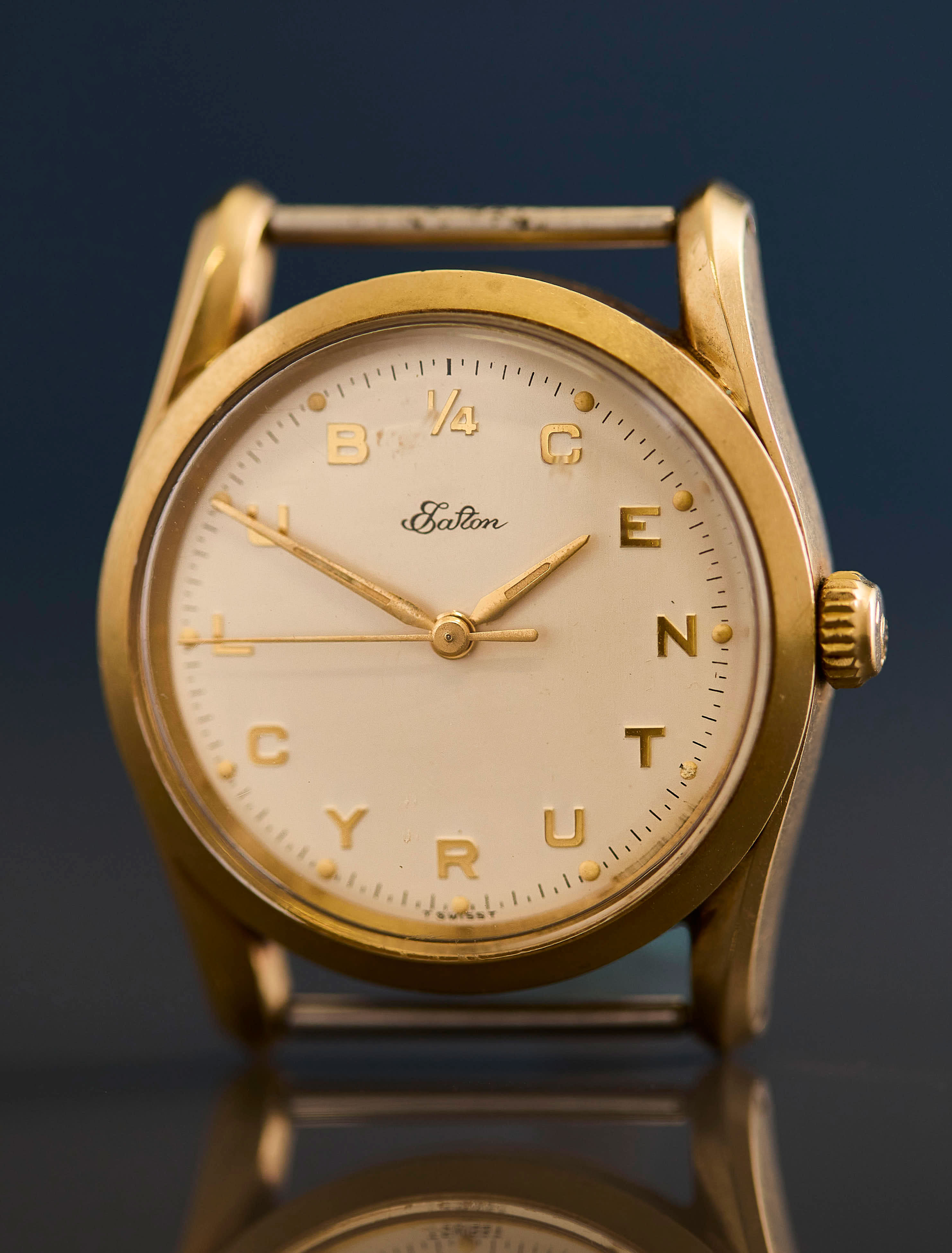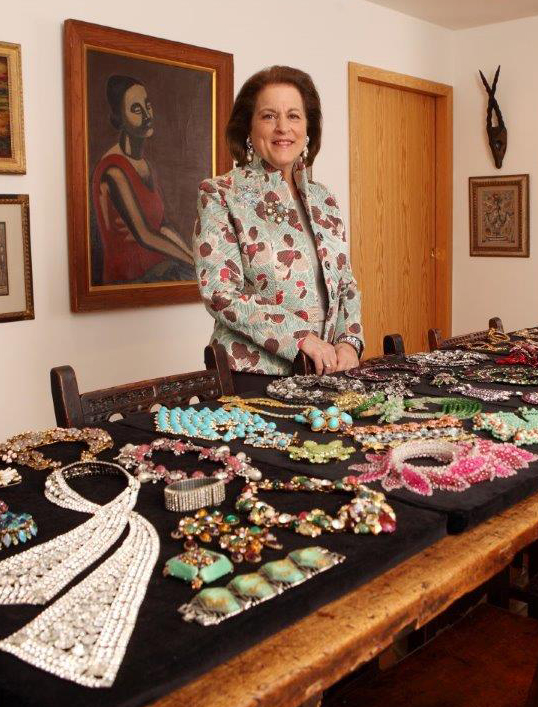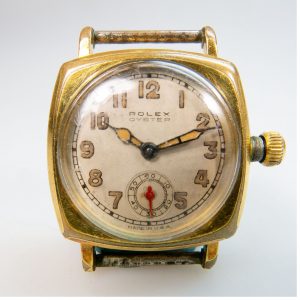
Estimate $400-$600
“He could not just wear a watch. It had to be a Rolex.” – Ian Fleming
Rolex watches have assumed a near-mythical status in the international cultural lexicon, conjuring up qualities that are bigger than the brand itself. To wear a Rolex is to imply success, style and connoisseurship, and the brand is name-checked in mediums as diverse as pop culture, music, literature and film. The well-deserved hype around Rolex watches has been carefully cultivated since their inception, the dovetailed result of both a quest for superior craftsmanship and a canny marketing strategy.
From the pocket to the wrist
Rolex began during a transitional moment when most gentlemen carried pocket watches. At the turn of the 20th century, “wristlet” watches—as they were then called—were seen as a women’s accessory rather than a timepiece for the serious man. As late as 1916, The New York Times noted that “until recently, the bracelet watch has been looked upon by Americans as more or less of a joke. Vaudeville artists and moving-picture actors have utilized it as a funmaker, as a ‘silly ass’ fad.”
It seems hard to believe given the modern ubiquity of the wristwatch, but it wasn’t until the First World War that the style entered the mainstream. Telephones and signal services were integral to 20th century warfare, meaning that soldiers needed timepieces. Watches worn on the wrist were more quickly and easily read, and thus allowed for better coordinated maneuvers. The practicality of the wrist-worn style could not be denied, and would begin to enter civilian life too.
Hans Wilsdorf’s big bet
Hans Wilsdorf, Rolex’s founder, predicted this shift well before the outbreak of war. Along with his brother-in-law Alfred Davis, Wilsdorf founded Wilsdorf & Davis Ltd. in 1905 in London. The company began by importing Swiss movements, packaging them in British cases, and selling them to various jewellers who could brand them as they saw fit.
Within a few years, Wilsdorf decided to focus on his own in-house brand, which he would re-brand as Rolex; ‘Wilsdorf’ was no asset as a company name, what with the rise of anti-German sentiments around the outbreak of WWI. Of that iconic name, Wilsdorf explained, “I tried combining the letters of the alphabet in every possible way. This gave me some hundred names, but none of them felt quite right. One morning, while riding on the upper deck of a horse-drawn omnibus along Cheapside in the City of London, a genie whispered ‘Rolex’ in my ear.”
Wilsdorf decided to bet big on the wristwatch, the timepiece he figured was best suited to the faster pace of the 20th century. The increasing popularity of athletic pastimes had also caught his notice, and Wilsdorf began imagining a watch that could keep up during strenuous activities, while also being ‘masculine’ and fashionable. He noticed that the wristwatch had to endure much more wear and tear than the pocketwatch, subjected as it was to rain, moisture, dust and being knocked about in the course of a day. He quickly decided that the ideal watch must be waterproof and dustproof, and set about making it.
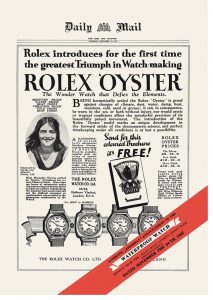
The Oyster
Rolex’s first waterproof and dustproof watch, the Submarine, was released in 1922. The design turned out to be less than ideal, relying as it did on a second outer case to protect the main watch body. This protective case needed to be opened daily to wind the watch, which would eventually weaken the waterproof seal. Wilsdorf pressed on, and by 1926 had unveiled the watch that would establish Rolex’s reputation, the Oyster. The Oyster—so named because of its water-tightness and how it clamped shut like an oyster’s shell—resolved the Submarine’s design flaws, and was a single-case watch with a screw-down back and bezel with a newly patented winding crown. The Oyster Perpetual, considered to be the first self-winding wristwatch, was released five years later.
Wilsdorf, ever the savvy marketer, advertised the Oyster as the “wonder watch” and began aligning his brand with athleticism, adventure, and feats of exploration. He equipped Mercedes Gleitze with the Oyster watch during her swim across the English Channel—the first time a British woman would be successful in this feat. When she emerged from her ten-plus hour ordeal, her Oyster was declared to be in perfect working order. Wilsdorf used Gleitze in his advertisements, taking out a full-page advertisement on the front of London’s Daily Mail, announcing “the debut of the Rolex Oyster and its triumphant march worldwide.” In shop windows where Rolex watches were sold, the Oyster was often displayed inside an aquarium or fish tank so as to illustrate its waterproof qualities and reliability—an indelible image in the minds of consumers.
A watch designed for adventure
Other feats of exploration and adventure soon followed. British driver Sir Malcom Campbell endorsed the Rolex after wearing his watch during his land speed record attempts in the early 1930s. Edmund Hillary wore one when he climbed Everest in 1953. Jacques Piccard took a specially-made Rolex with him into the deepest part of the ocean, the Mariana Trench, in 1960.
Wilsdorf cannily understood the populace’s desire to feel connected to great feats of daring and adventure as well as the appeal of precision timekeeping. Allen Farmelo, writing for Robb Report puts it thusly: “Wilsdorf understood that when someone sets a record, they’re going to make the papers, and setting records was a 20th-century obsession.” Even before Gleitze’s swim, Wilsdorf had the British government certify his watches for durability and accuracy, a classification typically reserved only for marine chronometers. Farmelo notes that the certification resonated with British consumers who “understood that accurate timekeeping—the solution to the long-standing problem of navigating longitude—had empowered the British Empire to dominate the seas in both combat and commerce. Thus began the convention of offering civilians mechanical accuracy that very few require but many desire.” Rolex watches were adventure-ready, and could put the average wearer in the same league as the world’s best and bravest.
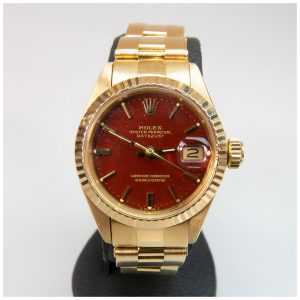
Estimate $9,000-$12,000
About the auction:
We are pleased to offer a selection of Rolex watches—the largest offering in a single auction to date—in our Wrist & Pocket Watches auction, including some early examples from the 1940s. The auction will be online from September 25-30, and we invite you to browse the full catalogue.
This is a diverse auction also featuring several Omega examples, plus a Zenith El Primero, a Ulysse Nardin dual time zone, a Panerai Radiomir, and watches by Heuer, Ebel, Montblanc, LeCoultre, Concord, Bremont, Baume & Mercier, Cartier and Piaget. Look for a number of lady’s evening wristwatches set with diamonds as well as 35 lots of pocket watches including many Railroad Grade and highly jewelled examples.
Please contact us for more information.
Related News
Meet the Specialists

Donald McLean
Senior Specialist

Livia Miliotis
Associate Specialist



